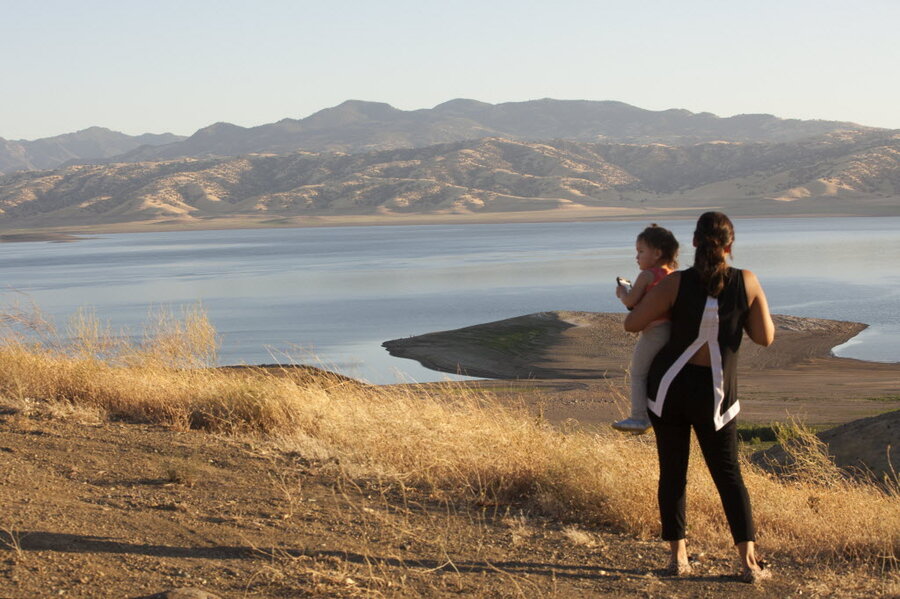What does a mountain lake reveal about California’s drought?
Loading...
One lake in California may hold clues as to how the state's current five-year drought and other major droughts throughout the region's history have been linked to climate change, hinting at what Californians might expect in the future, as well.
A study led by Glen MacDonald, a climate change researcher and professor at the University of California, Los Angeles, analyzed the relationship between past periods of climate warming, surface sea temperatures, and prolonged drought. And the findings, published on Thursday in Scientific Reports, could help determine if anthropogenic climate change will affect periods of drought in a similar way to historic, natural sources of climate change.
"These data provide evidence of a persistent relationship between past climate warming, Pacific sea surface temperature (SST) shifts and centennial to millennial episodes of California aridity...despite differences in the factors producing increased radiative forcing," the authors write.
The research team analyzed the organic matter in the sediments of a lake in the Eastern Sierra Nevada mountains to determine the changes in its past climate and water conditions. They then correlated their findings, and those in similar studies, with data from Pacific Ocean marine sediment.
In findings consistent with previous research, the study found that past periods of drought in the American West, such as those that occurred between 5,000 and 1,000 BC and during the European Middle Ages, aligned with climate warming and cool ocean temperatures in the eastern Pacific Ocean. Cool ocean temperatures will exacerbate the effects of climate change in a La Niña-like event, according to the study.
"There is little new here," Martin Hoerling, a research scientist with the National Oceanic and Atmospheric Administration who was not involved in the study, told the Los Angeles Times. He added that existing climate models "do affirm, that when the east Pacific is cold compared to the remaining tropical [waters], the American West tends to have low precipitation."
It is still uncertain as to whether anthropogenic climate change will affect the Pacific Ocean, and subsequently the drought in California, the same way that previous climate change events have – from volcanic activity, to sun spots, to shifts in the Earth's orbit.
"We don't know how the Pacific Ocean is going to respond," Dr. MacDonald told The LA Times. "The climate models which we use … are very, very poor in predicting what is going to happen to the Pacific."
But there is a possibility that California's current drought is only the beginning of a longer shift, the researchers say. If California does settle into an extended period of aridity, MacDonald has some ideas about what to expect, based on previous climate conditions.
"In a century or so, we might see a retreat of forest lands, and an expansion of sagebrush, grasslands and deserts," MacDonald said in a press release. "We would expect temperatures to get higher, and rainfall and snowfall would decrease. Fire activity could increase, and lakes would get shallower, with some becoming marshy or drying up."








